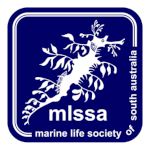While marine turtles have no known breeding or nesting sites in South Australia, they are infrequently reported in the sea, or cast up on beaches. The Pacific Ridley is only known to SA from two beachcast specimens found in 2012, and is considered well out of range for the tropical species. Records of the Green turtle are dominated by satellite tracking data from July and August in 2010, where tracking data revealed the species active in Gulf St Vincent and Investigator Strait for an extended period. Records of Leathery turtles are distributed widely across the state and include records inferred from historic newspaper articles (entered by MLSSA member, Dan Monceaux).
International conservation listing for marine turtles is managed by the International Union for the Conservation of Nature. In Australia, the species are protected under the EPBC Act 1999 and South Australian protection occurs under the State’s National Parks & Wildlife Act 1972.
| Genus | Species | Common names | Described | No. of records* | IUCN Listing | Australia | SA |
| Caretta | caretta | Loggerhead turtle | 1758, Linnaeus | 12 | Endangered | Endangered | Endangered |
| Chelonia | mydas | Green turtle | 1758, Linnaeus | 324 | Endangered | Vulnerable | Vulnerable |
| Lepidocheyls | olivacea | Pacific Ridley | 1829, Eschscholtz | 2 | Vulnerable | Endangered | |
| Dermochelys | coriacea | Leathery turtle | 1761, Vandellius | 69 | Critically endangered | Endangered | Vulnerable |
*records accessed via the Atlas of Living Australia on April 20, 2015.

[…] and remoras are rarely seen in South Australian waters, but they do occur here from time to time. Marine turtles in South Australia lists records of sea turtle sightings in South Australia up to 2015. According to that web page, […]